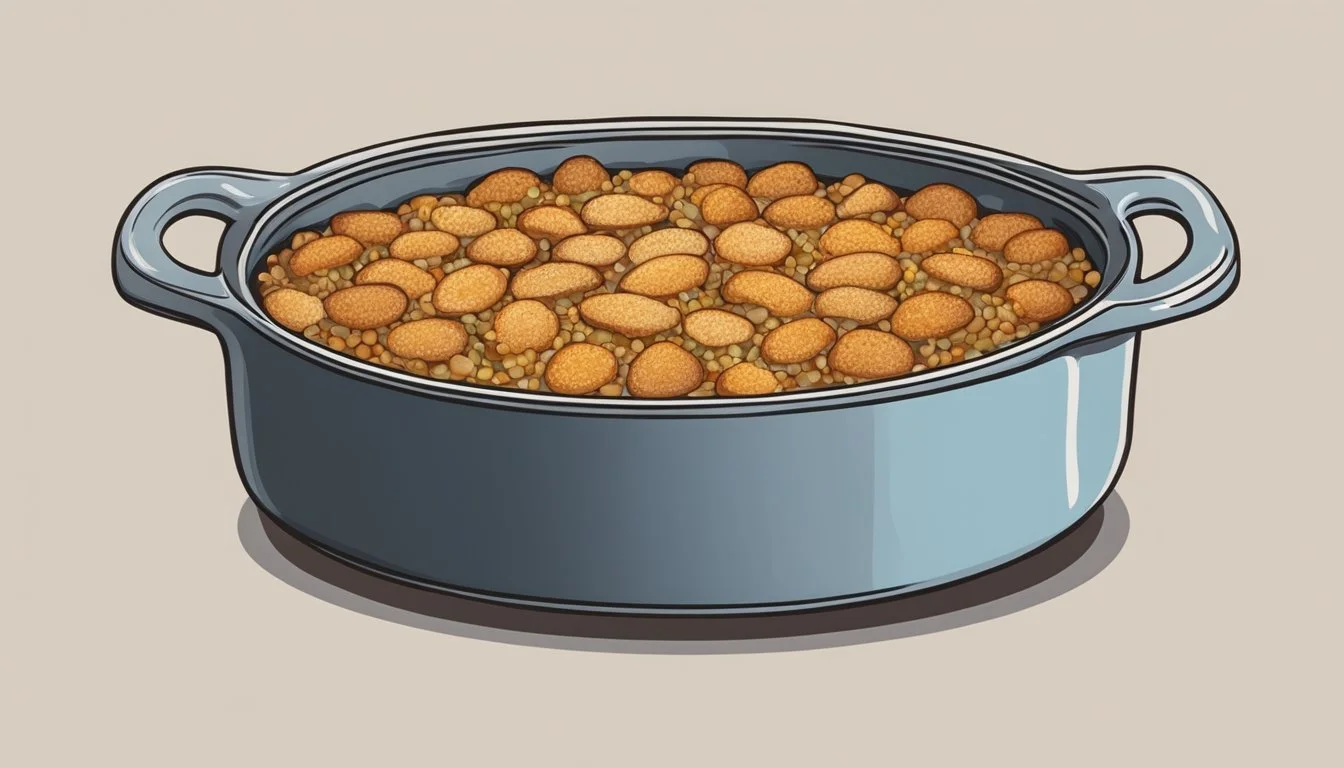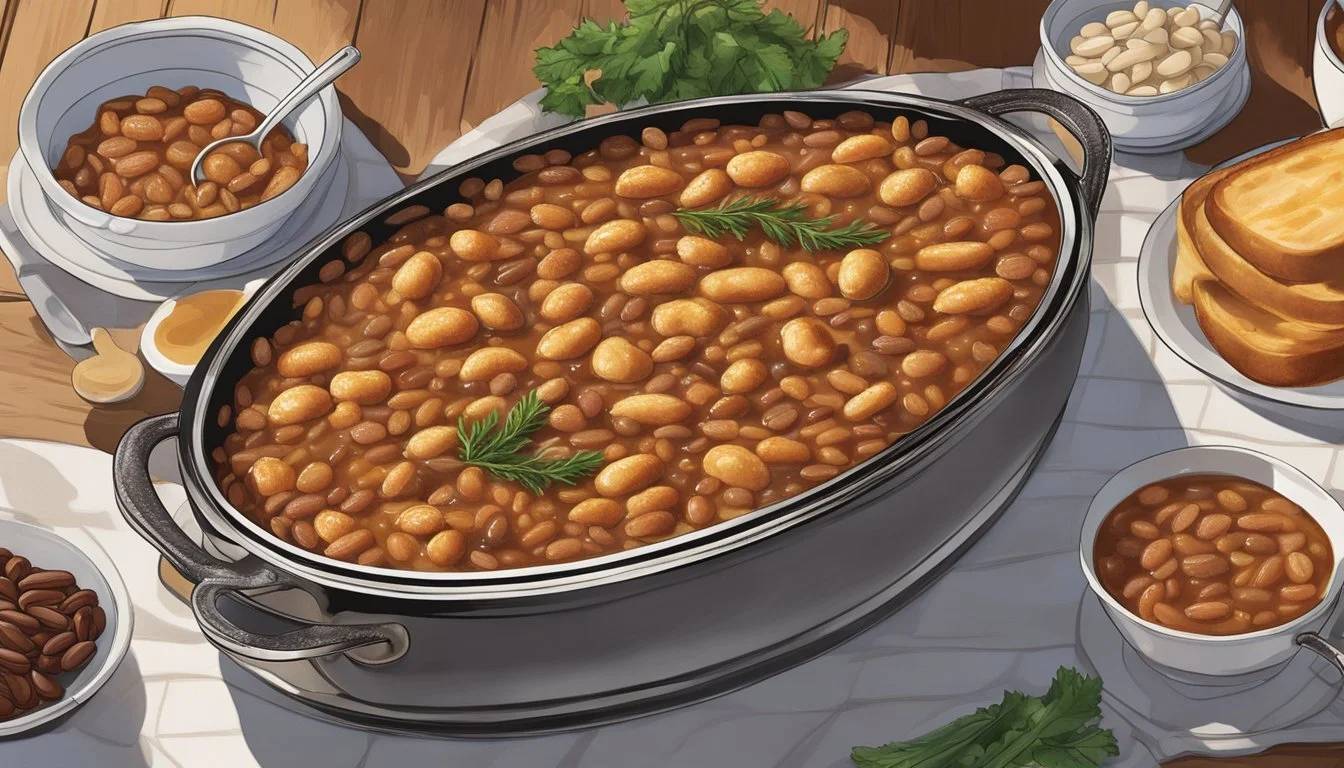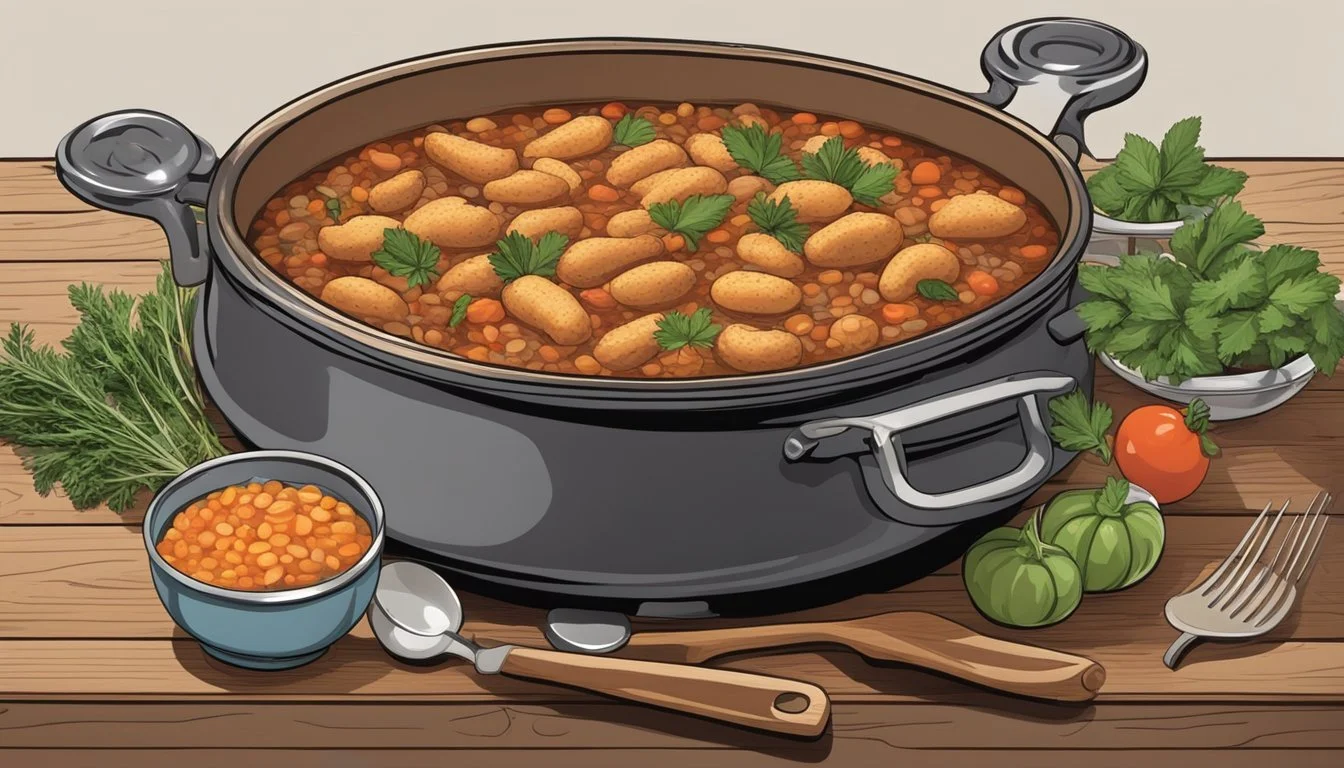How to Reheat Cassoulet for Perfect Flavor and Texture
Reheating cassoulet, a traditional French dish made from slow-cooked beans and meat, might seem daunting, but it's simpler than you think. The key to preserving its rich flavors and hearty textures lies in the reheating method you choose. Whether using an oven, stovetop, or microwave, each technique can yield satisfying results if done correctly.
For the best flavor and texture, reheating in the oven is highly recommended. Simply preheat the oven to 350°F, place the cassoulet in an oven-safe dish, and heat for 20-25 minutes until it's warmed through. This method ensures the beans and meat retain their tenderness and the crispy crust remains intact.
Alternatively, for those short on time, the microwave is a convenient option for reheating smaller portions. Place the cassoulet in a microwave-safe bowl, cover it loosely, and heat it in short intervals, stirring occasionally to ensure even warming. This method prioritizes convenience while still delivering a delicious meal.
Understanding Cassoulet
Cassoulet is a traditional French dish rich in flavor and history. This dish typically combines various proteins and ingredients, known for its unique textures and hearty taste.
Components of Cassoulet
Cassoulet features white beans as its base, providing protein and fiber. Common meats include sausage, pork, and duck confit, each bringing distinct flavors and textures.
Sausage adds smokiness, pork contributes tender bits, and duck brings richness. Other ingredients often include lardon, garlic, and tomatoes. These combine to create a dish that’s both savory and filling.
History and Tradition
Cassoulet originated in the Languedoc region of France. It was historically a peasant dish, designed to be hearty and nutritious.
Originally, the ingredients were based on what were locally available, making it an epitome of rustic French cuisine. Different cities claim their own variations, with Castelnaudary, Carcassonne, and Toulouse being the most notable, each asserting their version as the best.
Nutritional Profile
Cassoulet is high in protein and fiber due to the combination of white beans and various meats. This mix enhances its nutritional value, making it a balanced meal.
However, the dish can also be high in fat, especially when using duck confit and pork. Understanding the balance of these components can help one enjoy the dish as both a comforting and nourishing option.
Preparing Cassoulet for Reheating
Proper preparation can make a significant difference in how well leftover cassoulet reheats. Ensuring the dish is stored correctly and checked for quality before reheating helps preserve its rich flavors and textures.
Proper Storage Techniques
Cassoulet should be stored in an airtight container to prevent it from absorbing any unwanted odors from the refrigerator. Freezer bags or tightly sealed foil can also work well, particularly if you plan to freeze the leftovers.
Refrigerator: Store the cassoulet in the refrigerator if you plan to reheat it within a few days. Ensure the temperature is below 40°F to prevent spoilage.
Freezing: For longer storage, freeze the cassoulet. When placing in the freezer, use bags or containers that are designed to withstand freezing temperatures.
Label the containers with the date to monitor freshness. Before reheating, it's crucial that the dish is thoroughly defrosted if it was frozen, which can be achieved by leaving it in the refrigerator overnight.
Pre-Reheating Checklist
Defrosting: If the cassoulet was frozen, transfer it to the refrigerator and let it defrost overnight. Avoid defrosting at room temperature to prevent bacteria growth.
Visual Inspection: Check the dish for any signs of spoilage such as discoloration or off smells. Discard if it shows any signs of spoilage.
Preparation: If the cassoulet includes separate components like duck confit, ensure these are properly mixed in the dish before reheating.
Equipment Check: Ensure you have the necessary equipment such as an oven, microwave, or steamer based on your reheating method.
Following these steps will help in maintaining the quality and safety of your cassoulet.
Reheating Cassoulet in the Oven
Reheating cassoulet in the oven ensures the dish retains its rich flavors and hearty textures. This method balances an even heat distribution and moisture retention.
Step-by-Step Oven Reheating
Preheat the Oven: Set the oven temperature to 350°F (175°C) to ensure even heating.
Prepare the Cassoulet: Place the cassoulet in an oven-safe casserole dish. Cover it with aluminum foil to prevent the top from burning.
Add Moisture: Pour a small amount of broth or duck fat into the dish. This adds moisture and enhances flavors as it reheats.
Heating Duration: Place the covered casserole in the preheated oven and heat for 30-40 minutes. Check if the dish is heated through by inserting a knife in the center which should come out hot.
Crisp the Top: Remove the foil for the last 10 minutes if a crispy top is desired.
Maintaining Moisture and Flavor
Maintaining moisture and flavor is crucial when reheating cassoulet.
To keep the dish from drying out, add a small amount of broth or duck fat before reheating. This method helps preserve the rich, hearty textures and deep flavors of the dish. Cover the cassoulet with aluminum foil tightly to trap the moisture inside the casserole.
Another tip is to reheat the dish on low heat settings to prevent the ingredients from drying out. Allowing the dish to heat slowly and evenly contributes to a more flavorful and moist final product.
Alternative Reheating Methods
When it comes to reheating cassoulet, there are several methods that can deliver flavorful results. From stovetop simmering to microwave reheating, each approach offers unique benefits. Here's how to navigate these alternatives:
Stovetop Simmering
Stovetop simmering is a great option for reheating cassoulet, ensuring the dish is warmed evenly.
Preparation: Use a large pot or Dutch oven. Add a splash of broth or water to maintain moisture.
Temperature: Set the burner to medium-low heat.
Process: Stir occasionally to avoid sticking and ensure even heating.
Assessment: Check the internal temperature to ensure it reaches around 165ºF (74ºC) for safety.
This method keeps the dish moist and allows flavors to meld beautifully.
Microwave Reheating
Microwave reheating is convenient but requires careful monitoring to avoid drying out the cassoulet.
Portioning: Reheat small portions to ensure even heating.
Cover: Use a microwave-safe cover or damp paper towel to trap moisture.
Temperature: Start at medium power to avoid overcooking.
Stirring: Stop periodically to stir and check for hot spots.
Timing: Reheat in short bursts, around 1-2 minutes, to reach an internal temperature of 165ºF (74ºC).
This quick method is perfect for when time is of the essence.
Using a Slow Cooker
The slow cooker method is ideal for reheating cassoulet without losing its rich texture and flavor.
Preparation: Transfer the cassoulet to the slow cooker.
Settings: Set the cooker to low or warm heat, ensuring the temperature does not exceed 200ºF (93ºC).
Timing: Allow it to reheat slowly over a few hours.
Stirring: Stir occasionally to distribute heat evenly.
Temperature Check: Ensure it reaches a safe internal temperature of 165ºF (74ºC).
This method is perfect for gradual reheating, which enhances the dish's flavors.
Enhancing Flavor Post-Reheating
To truly elevate the flavor of your reheated cassoulet, focus on adjusting the seasoning and adding fresh herbs and aromatics. These steps ensure the dish retains its rich, hearty essence.
Adjusting Seasoning and Freshness
Once the cassoulet has been reheated, freshly adjusting the seasoning can significantly enhance its taste. Start by tasting the dish and then add salt and pepper as needed to bring out the flavors. Freshly ground black pepper can add a subtle kick.
Garlic can be another excellent addition. Finely mince one or two cloves and stir them into the hot cassoulet. This can provide a fresh, aromatic boost to the dish.
Consider adding a splash of fresh broth or a squeeze of lemon juice if the cassoulet seems dry or if the flavors need brightening. These simple adjustments help maintain the integrity and depth of the cassoulet's flavors.
Herbs and Aromatics to Add
Fresh herbs can revitalize your reheated cassoulet. Parsley sprinkled on top can add a pop of color and a burst of freshness.
Adding thyme and bay leaves during the reheating process can impart deeper, earthy notes. Remove these herbs before serving for the best texture.
For an aromatic touch, sauté finely chopped onion and mix it in post-reheating. This method allows the onion to retain a slight crunch and provide a sweet, aromatic depth. Additionally, a touch of tarragon or chervil can add a subtle, slightly sweet anise flavor, heightening the complexity of the dish.
Serving and Presentation
Serving cassoulet involves attention to detail, ensuring it's presented in a visually appealing and appetizing manner. Consider the accompaniments and how you plate this hearty dish to elevate its presentation.
Accompaniments and Sides
When serving cassoulet, sides play a crucial role in enhancing the overall dining experience. A green salad is a refreshing addition that balances the rich flavors. Simple vinaigrettes or light dressings work best.
French bread or a crusty baguette is perfect for soaking up the savory juices. Lightly toasted and served warm, it adds a delightful crunch. Herb-infused olive oil or garlic butter can complement the bread.
Roasted vegetables offer a hearty side, providing a balance of flavors without overpowering the cassoulet. Consider roasting carrots, parsnips, or Brussel sprouts with a touch of olive oil and herbs.
Plating Cassoulet
Plating cassoulet can be straightforward yet elegant. Serve it gently bubbling in its cooking dish. This not only keeps it warm but adds a rustic charm to the presentation.
For individual servings, maintain the integrity of the layers. Spoon out servings to ensure there's a good mix of meat, beans, and sauce in each portion. Avoid over-filling plates; moderation keeps the presentation tidy.
A sprinkling of breadcrumb topping adds texture and visual appeal. Fresh herbs like parsley or thyme can garnish the dish, adding a pop of color and freshness.
Using warm plates ensures the cassoulet stays hot longer. Choice of dishware can elevate presentation, with neutral-toned ceramics providing a beautiful contrast to the rich hues of the cassoulet.
Assessing and Solving Common Issues
When reheating cassoulet, problems often include drying out and maintaining texture. Solutions focus on moisture retention and proper reheating techniques.
Dry Cassoulet Solutions
Cassoulet can dry out during reheating, affecting its flavor and texture. To address this, add a small amount of broth or water before reheating. This helps maintain moisture and prevents the dish from becoming too dry.
Cover the dish with a lid or aluminum foil. This traps steam, aiding in moisture retention. For a creamy texture, add a splash of cream or some additional duck fat. This reintroduces fat lost during reheating, keeping the dish rich.
Avoid reheating on high heat. Medium to low heat ensures gradual warming, preventing the ingredients from drying out. Using a microwave? Cover the dish with a damp paper towel to help retain moisture.
Texture Preservation
Maintaining the texture of cassoulet involves careful reheating. Avoid rapid temperature changes, which can make meat tough and beans mushy. Instead, reheat gradually.
For a crusty bread topping, reheat in the oven. Preheat the oven to 350°F (175°C) and cover the cassoulet with aluminum foil. Heat for about 20 minutes, then remove the foil and bake for an additional 5-10 minutes. This method preserves both the creamy texture of the dish and the crusty bread topping.
Handle dried white beans with care. They can become overly soft if reheated too quickly. Opt for a low simmer on the stovetop, stirring occasionally to distribute heat evenly. This method preserves the integrity of the beans while keeping the overall texture well-balanced.









